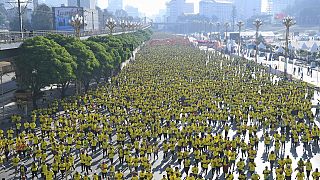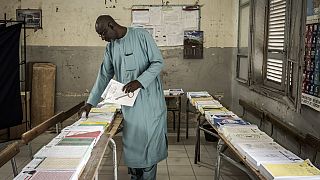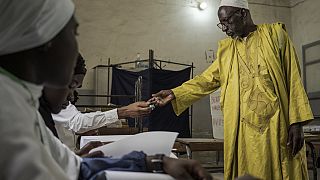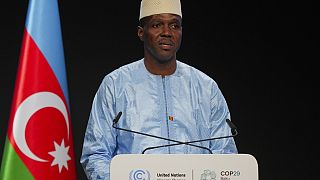Senegal
Some 50 young tortoises have discovered the African soil of their ancestors near Dakar, where they will have to forget their years in Monaco and learn about life in the wild to help save their threatened species.
Carefully removed from the plywood boxes in which they had travelled since Saturday, first by road and then by air, the 46 turtles, as if groggy, took a few minutes on Tuesday to get their heads out of their hand-sized shells.
Then they put one paw hesitantly in front of the other on the hot sandy ground of the turtle village of Noflaye, a town 35 km from the Senegalese capital.
The shock is harsh. Just last week, they were living in the Turtle Island, a space set up on the panoramic terrace of the Oceanographic Museum in Monaco. They were born there, eight years ago for the oldest ones, a mere trifle when one can reach more than a hundred years old and weigh about the same.
In Noflaye, in order to maintain their rank as the third largest land tortoise after those of the Galapagos and the Seychelles, they will have to start recovering their instincts, try to eat by themselves, no longer lettuce, but plants, even carrion, and make their burrow.
These are all activities that are superfluous in Monaco but vital for their forebears," explains Olivier Brunel, head of the aquarium at the Oceanographic Museum.
Their parents remained in Monaco, six individuals of the species Centrochelys sulcata, given to Prince Albert II in 2011 by President Amadou Toumani Touré during a visit to Mali, Senegal's Sahelian neighbour.
In association with the African Institute for the Study and Protection of Turtles (ACI), the Monegasque Oceanographic Institute has entrusted the 46 "juveniles" with the mission of participating in the reinforcement of the populations of ridged turtles, so called because of the folds in their shells.
The ridged turtle, endemic to the Sahel, a huge semi-arid sub-Saharan strip crossing Africa from east to west, is a threatened species. There are "at most" 150 individuals left in the wild in Senegal, explains Tomas Diagne, director of the ICA.
It is a victim of its predators, hyenas and jackals, but also of the destruction of its habitat through overgrazing and international trafficking. Too often it ends up as a pet.
Aerial interlude
"If nothing urgent and constructive is done, in the next thirty years the species will disappear in the wild in Senegal. It will only exist in homes, in private farms," worries Mr Diagne, who is also chairman of the scientific committee of the Turtle Village, a study, preservation and education centre where the 46 new arrivals will spend their first months.
Generally speaking, the situation is "not good" for all African and Senegalese turtles, whether terrestrial or marine, he says in the shade of the acacias and baobabs of the Turtle Village.
"If I were a turtle, I wouldn't ask to live or be born in West Africa, or simply in Africa," he admits.
Yet this is the reality that the 46 pioneers will face. Their journey, governed by the controls and authorisations linked to their status as a protected species, will have been an interlude between two lives, spent in the individual compartments of six wooden crates with holes and decorated with stencils by the children of Prince Albert II and Princess Charlène of Monaco.
Carefully loaded at Roissy-Charles-de-Gaulle among the other goods of a commercial Air France Paris-Dakar flight, they travelled in a hold heated to 23 degrees Celsius, explains the captain François Charavin.
At Noflaye, they were placed in a quarantine pen. There, they will begin to "relearn the basics of living in the wild" for a few months, Mr Diagne said.
Then they will be transferred to a reserve in the north-west, as close as possible to the Sahel, first in a so-called stabilisation enclosure, for their protection. Then the enclosure will be slaughtered.
A model to follow, according to Tomas Diagne.
"These are turtles born in Monaco, from parents in Africa, (they) were able to return to their land, the land of their ancestors. African fauna leaves all the time, it is exported all the time (...) It is very rare that it comes back".












01:35
Rare Atlas lion cub celebrated in Morocco as an important moment in conservation
00:51
One-Month-Old Southern White Rhino Calf Takes First Outdoor Steps at Whipsnade Zoo
01:44
IUCN report says one in three of world's trees in danger of extinction
01:50
The battle to save seagrass off Kenya's coast
01:03
UK zoo welcomes endangered African Penguin chicks
01:42
World Rhino Day: Africa still needs to step up efforts to preserve the species